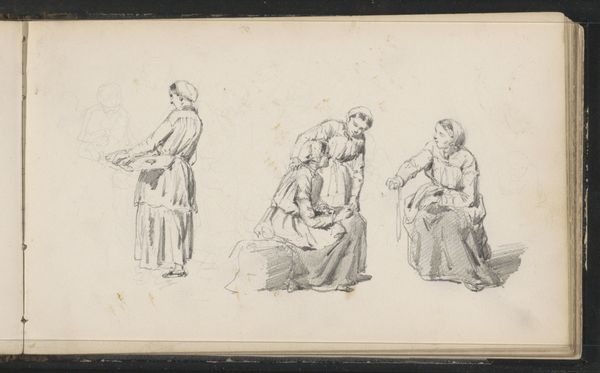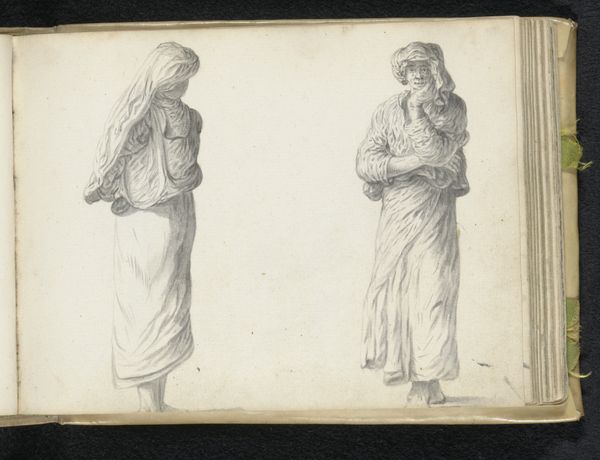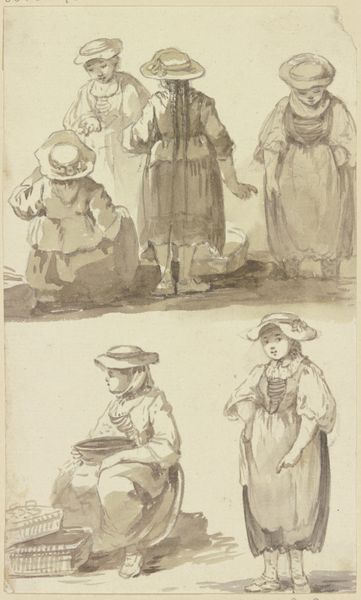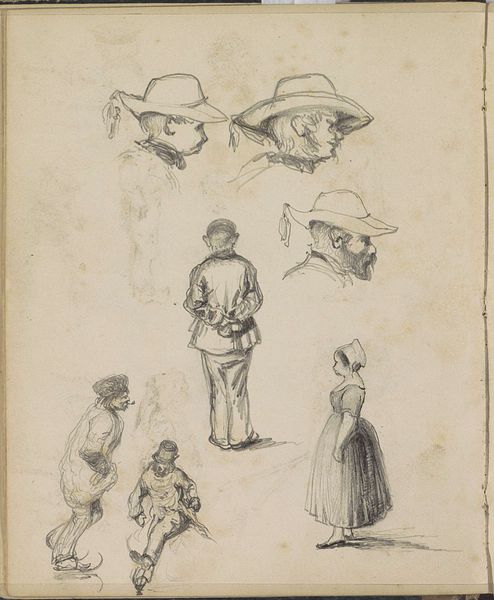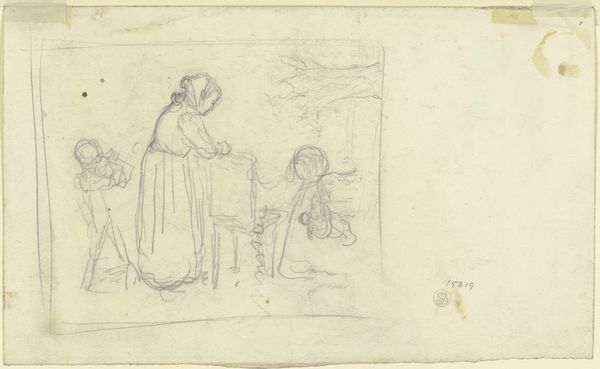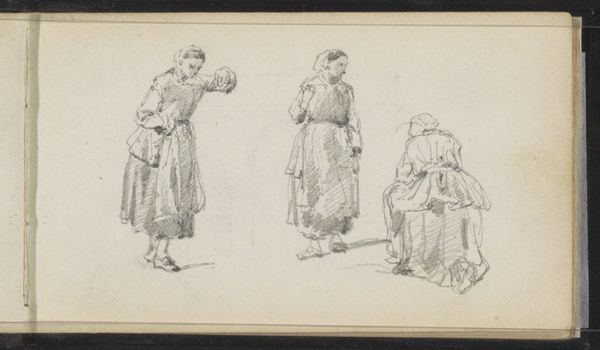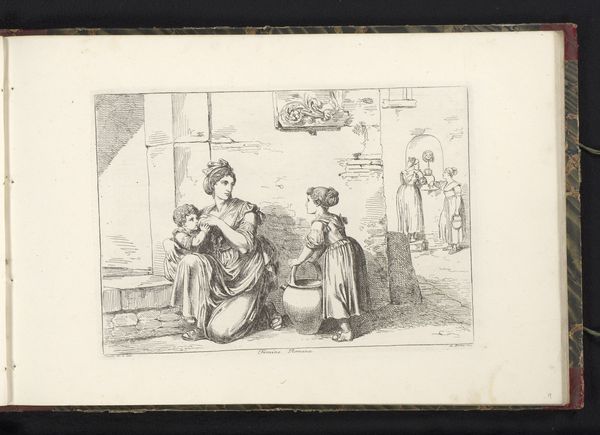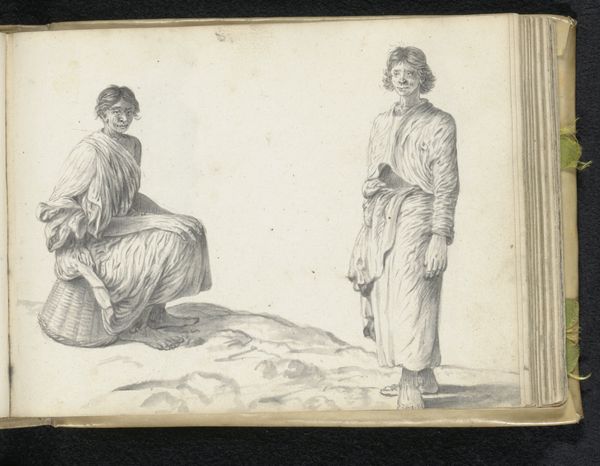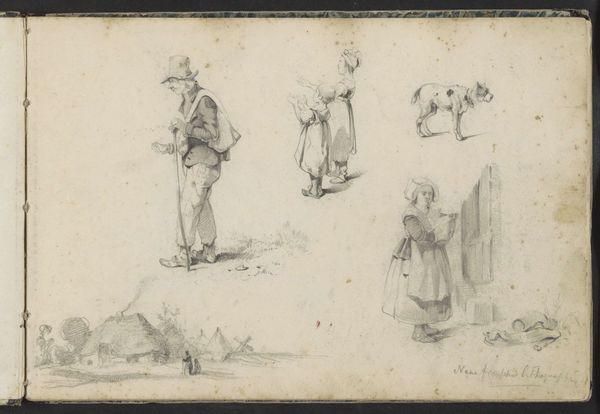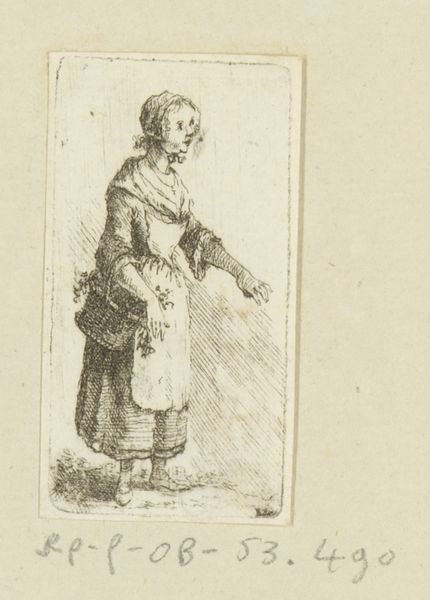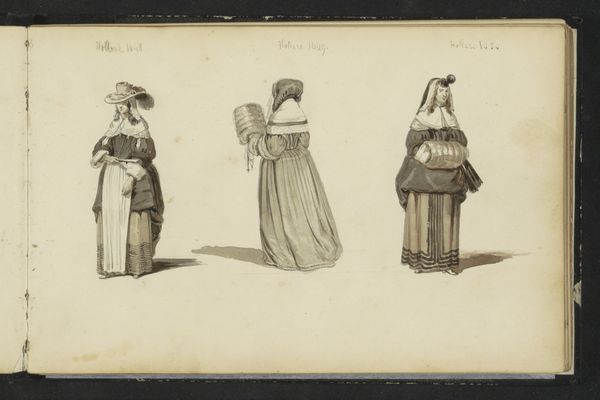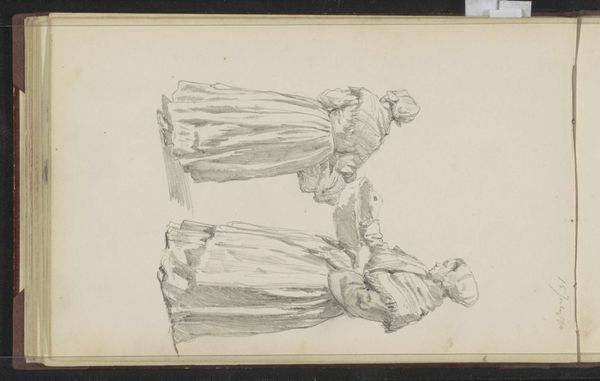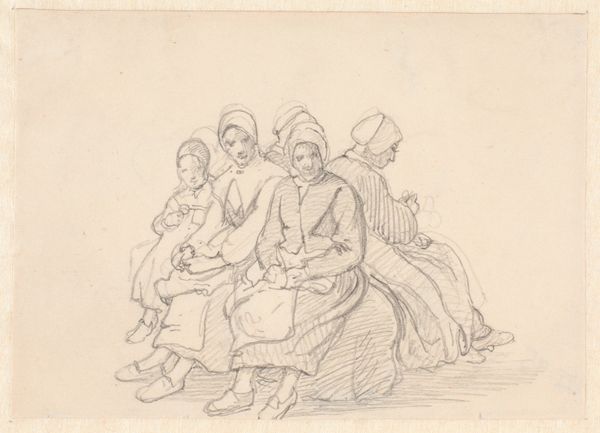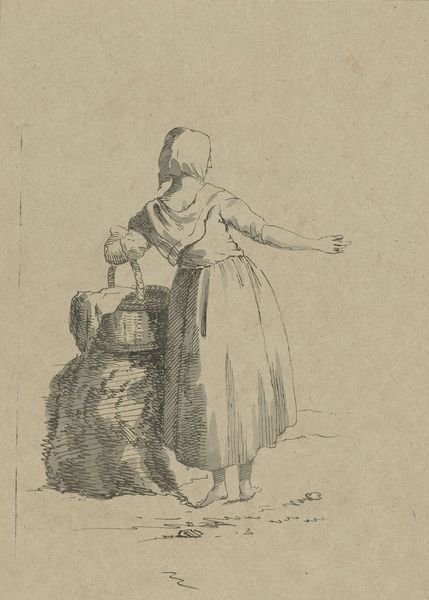
drawing, paper, pencil
#
portrait
#
drawing
#
light pencil work
#
quirky sketch
#
dutch-golden-age
#
pen sketch
#
sketch book
#
landscape
#
paper
#
personal sketchbook
#
sketchwork
#
pen-ink sketch
#
pencil
#
sketchbook drawing
#
genre-painting
#
storyboard and sketchbook work
#
sketchbook art
#
realism
Copyright: Rijks Museum: Open Domain
Editor: So this is Maria Vos's "Vier voorstellingen met boerenmeisjes" from sometime between 1834 and 1906. It's a pencil drawing on paper, housed in the Rijksmuseum. There's a real sense of everyday life here, but the depiction of these peasant girls also feels a bit distant. What do you see in this piece? Curator: It's fascinating how Vos captures these glimpses of rural life, isn't it? Consider the social context. In the 19th century, representations of the working class, particularly women and girls, were often loaded with idealizations or dismissals. I see these sketches as participating in that conversation. To me it's a crucial task to consider how Vos engages or challenges these stereotypes. What strikes you about their representation? Editor: I guess they seem…gentle? There's a quietness, a lack of overt drama, which maybe softens the reality of their lives? Curator: Exactly. And that invites a critical look. What choices did Vos make in portraying these young women? Think about it this way: Did she give agency or further marginalize her subjects? Were these drawings made for the artist or meant for an audience? Considering these angles deepens our understanding, and connects the historical and political dimensions of the image. What did Maria Vos, a female artist herself, want to communicate? Editor: That makes so much sense! Looking at it now, I can see that while the scenes feel candid, there's also a conscious artistic decision behind them, a representation from a certain point of view. I wouldn’t have picked that up otherwise! Curator: It's all about critically analyzing these images. Looking closer at the artist's social situation might make us more receptive to intersectional nuances. With these critical tools, you may see new possibilities in old artworks. Editor: This definitely gives me a fresh way to approach art history. It moves beyond just description to a richer understanding of social narratives. Thanks!
Comments
No comments
Be the first to comment and join the conversation on the ultimate creative platform.
